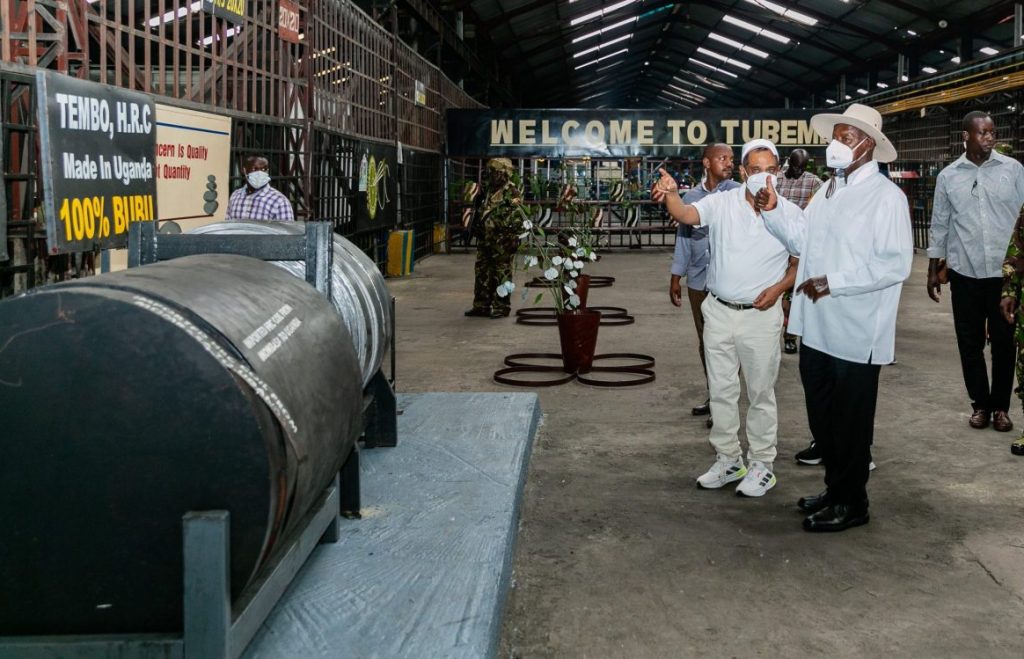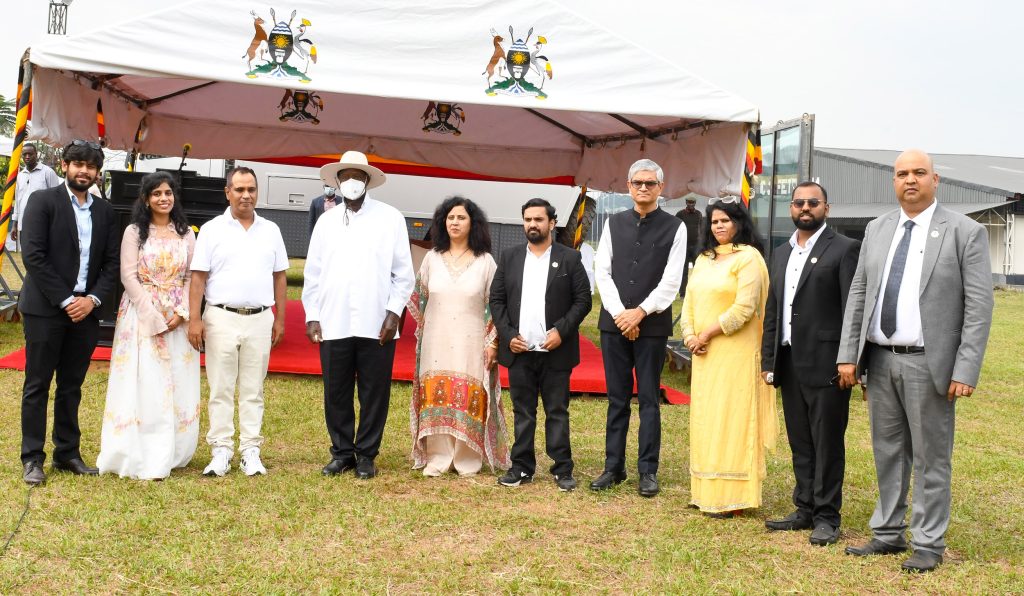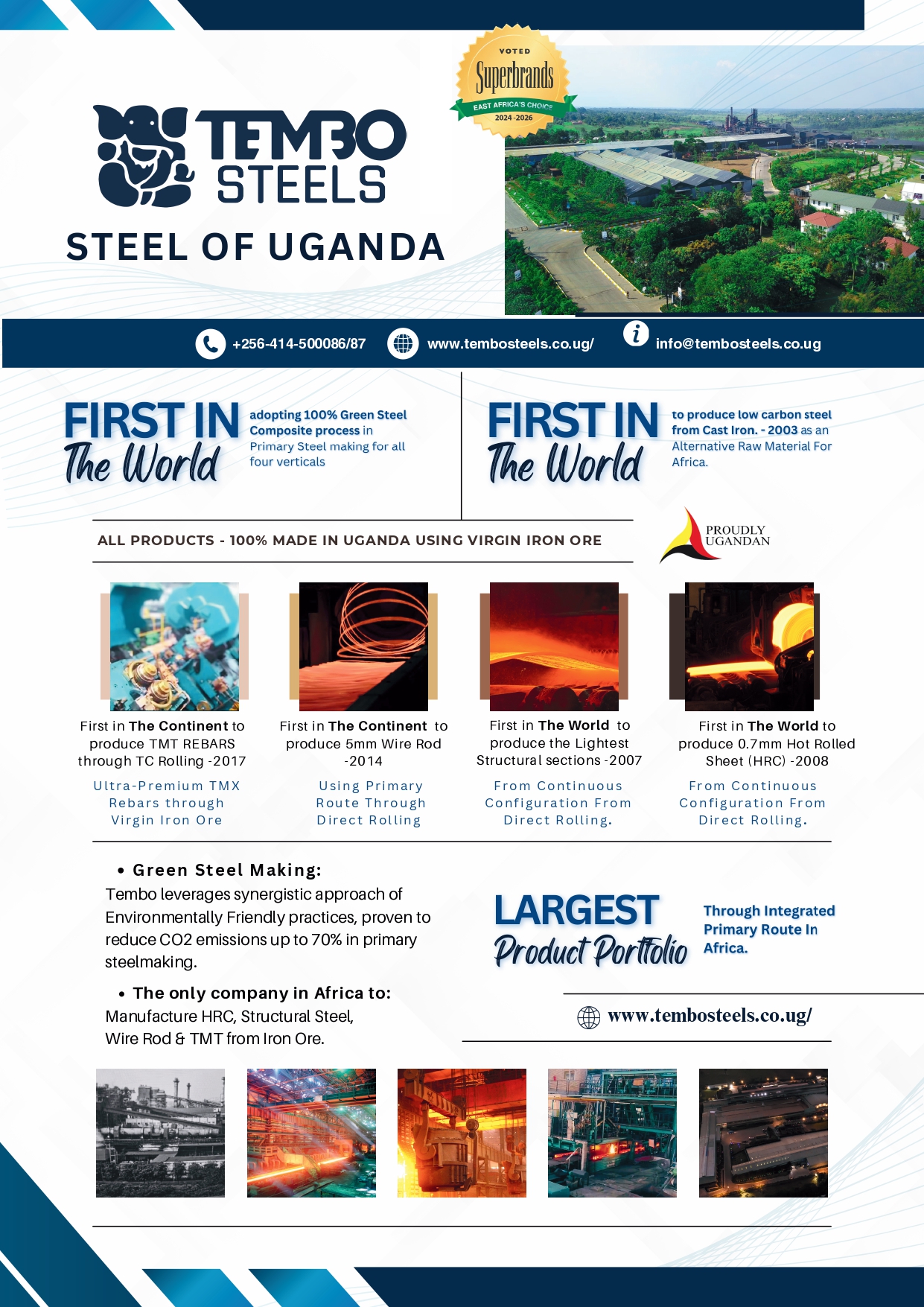In January this year, Uganda’s President Yoweri Kaguta Museveni the commissioned a new Direct Reduced Iron (DRI) plant at Tembo Steels in Kasolo Village, Bulamagi Sub-County, Iganga District.

The new facility marks a major milestone in Uganda’s industrialization journey, with Tembo Steels reaffirming its position as a key player in the country’s steel industry.
Established in 2004, Tembo Steels has grown into a major manufacturing hub, producing steel, oxygen cylinders, and nitrogen. The company sources its raw materials locally, significantly contributing to Uganda’s economy and creating over one million jobs for Ugandans.

During his remarks, President Museveni commended the Chairman of Tembo Industries for the transformative impact the company has had on Uganda’s economy. He emphasized the importance of locally integrated industries, stating that such initiatives save the country from the “hemorrhage of resources.” He further noted Uganda’s rich iron ore reserves, particularly in Kabale, as a vital resource for the steel industry.
Mr. Manish, the General Manager of Tembo Steels, hailed the launch of the second plant as a significant achievement. “This milestone represents our unwavering commitment to growing Uganda’s economy. With the addition of this plant, we anticipate a substantial boost to the country’s industrial output,” he said.

The event was attended by a number of high-profile figures, including government ministers, members of parliament, religious leaders, investors, and local officials. Tembo Steels (U) Ltd, a US ISO 9001: 2015 Certified company is the Most Diversified & Integrated Steel Plant in Africa With The Largest Product Portfolio Through Integrated Route Covering All Four Verticals Of Steel.
TSUL products are strengthened by the resilience of innovation. Customisation is at the core of all our product development and our global technology brilliance ensures the best-in-class offerings for the valued customers.
With its timeless business philosophy, TSUL is poised not only to survive but to triumph in a marketplace characterized by rapid change. Indeed, the company’s remarkable success story has been primarily shaped by its commitment to innovation, setting new standards, strengthening capabilities, enriching lives, and maintaining fidelity to its core values. Consequently, the company remains a forward-looking corporation and stands as the most favoured steel manufacturer in the country.
Direct reduced iron (DRI), also called sponge iron,is produced from the direct reduction of iron ore (in the form of lumps, pellets, or fines) into iron by a reducing gas which contains elemental carbon (produced from natural gas or coal) and/or hydrogen. When hydrogen is used as the reducing gas no carbon dioxide is produced. Many ores are suitable for direct reduction.
Direct reduction refers to solid-state processes which reduce iron oxides to metallic iron at temperatures below the melting point of iron. Reduced iron derives its name from these processes, one example being heating iron ore in a furnace at a high temperature of 800 to 1,200 °C (1,470 to 2,190 °F) in the presence of the reducing gas syngas, a mixture of hydrogen and carbon monoxide, or pure hydrogen.
Benefits
Direct reduction processes were developed to overcome the difficulties of conventional blast furnaces. Factors that help make DRI economical:
-
Direct-reduced iron has about the same iron content as pig iron, typically 90–94% total iron (depending on the quality of the raw ore) so it is an excellent feedstock for the electric furnaces used by mini mills, allowing them to use lower grades of scrap for the rest of the charge or to produce higher grades of steel.
-
Hot-briquetted iron (HBI) is a compacted form of DRI designed for ease of shipping, handling, and storage.
-
Hot direct reduced iron (HDRI) is DRI that is transported hot, directly from the reduction furnace, into an electric arc furnace, thereby saving energy.
-
The direct reduction process uses pelletized iron ore or natural “lump” ore. One exception is the fluidized bed process which requires sized iron ore particles.
-
The direct reduction process can use natural gas contaminated with inert gases, avoiding the need to remove these gases for other use. However, any inert gas contamination of the reducing gas lowers the effect (quality) of that gas stream and the thermal efficiency of the process. The use of natural gas also produces greenhouse gases.
-
Supplies of powdered ore and raw natural gas are both available in areas such as Northern Australia, avoiding transport costs for the gas. In most cases, the DRI plant is located near a natural gas source as it is more cost effective to ship the ore rather than the gas.
-
To eliminate fossil fuel usein iron and steel making, renewable hydrogen gas can be used in place of syngas to produce DRI and eliminate production of greenhouse gases.


